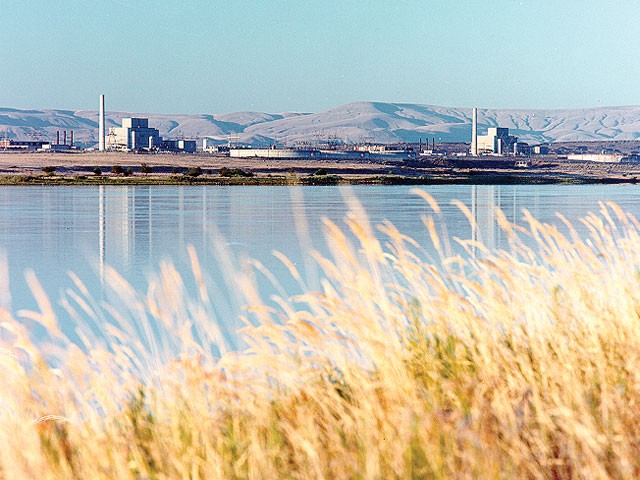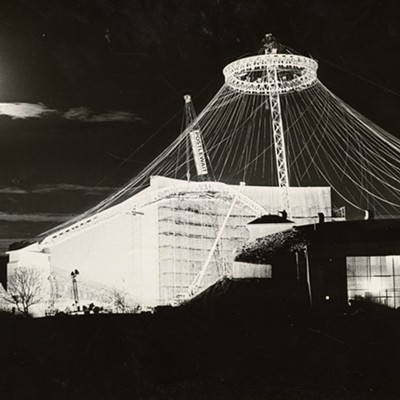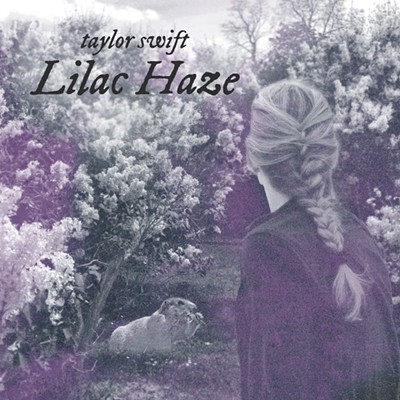Hanford is the most contaminated place in the Western Hemisphere, with millions of gallons of radioactive waste in leaking, underground tanks. Not surprisingly, the cleanup is expensive, complicated — and controversial.
Last week, the Department of Energy held a public hearing in Spokane seeking input on the plan to clean up the 568-square-mile nuclear reservation next to the Tri Cities.
Mary Beth Burandt of DOE’s Office of River Protection in Richland, explained the 6,000-page Environmental Impact Statement in a short presentation and concluded that officials would take public comments into account in the final decision-making process.
Energy’s intention, at this point, is to treat 99 percent of the waste in the tanks before capping and re-burying them in the ground.
This idea did not sit well with the crowd.
“We cannot put toxic waste out of sight, out of mind,” said Rosemarie Bisiar, chair of Eastern Washington Voters.
Most of those who spoke supported an alternative vision that involved cleaning 99.9 percent of the waste from the tanks, removing the tanks and then further cleaning millions of gallons of waste contaminating the soil.
Burandt pointed out that this would entail the largest soil cleanup the United States has seen and is by far the most expensive option.
“Is all this work really going to buy us something?” she asked the audience.
Amber Waldref, one of three Spokane City Council members who attended the hearing, thought it would. She asked for as much clean closure as possible at the site, considering that many of the tanks are leaking.
“It doesn’t make a lot of sense to me to leave it there and let it re-contaminate,” she said.
Many also took exception with DOE’s proposal to begin shipping some 17,500 truckloads of additional nuclear waste to Hanford from around the country beginning in 2022 — lifting a moratorium that has been in place since 1980.
“Adding more waste shouldn’t even be an option,” Waldref said.
Bart Haggin stood up, outraged, saying that Hanford has been mismanaged for 60 years and has lost the public’s trust. He called the latest statement from the DOE half-baked.
“What kind of conscience do you have?” he asked. “I don’t see how you have the testicular fortitude to show up.”
Bob Apple, also a Spokane City Council member, said the easiest route to Hanford is the I-90 corridor, which runs straight through the heart of Spokane.
“To ignore that fact is ridiculous,” he said.
Apple, who has testified at Hanford hearings since the 1970s, said that if there were to be an accident on I-90, the city is not prepared to handle a nuclear spill.
“I want to point out how hazardous this is,” he said. “This [plan] is not very well thought out.”
Jeff Lyon of the state Department of Ecology said Ecology supports the DOE’s proposed plan, focusing first on the aging and leaking tanks to be emptied as soon as possible. But he said the agency objects to storing more waste at Hanford, and Ecology is prepared to take them to court once again to extend the moratorium.
“We share the same values that the people expressed here,” he said. “We are listening to the community.”
The DOE held hearings earlier this year in Boise, Hood River, Portland, La Grande and Eugene. The last hearing will take place in Seattle on March 8.
Burandt says that many of the concerns expressed at the hearing in Spokane have been consistent in every city she has visited — including Boise, Portland and Eugene — especially the opposition to bringing toxic waste to the site.
Burandt, however, was unable to say how much influence the public sentiment would have in DOE’s decision process. “We’re at the early stages,” she said.





















